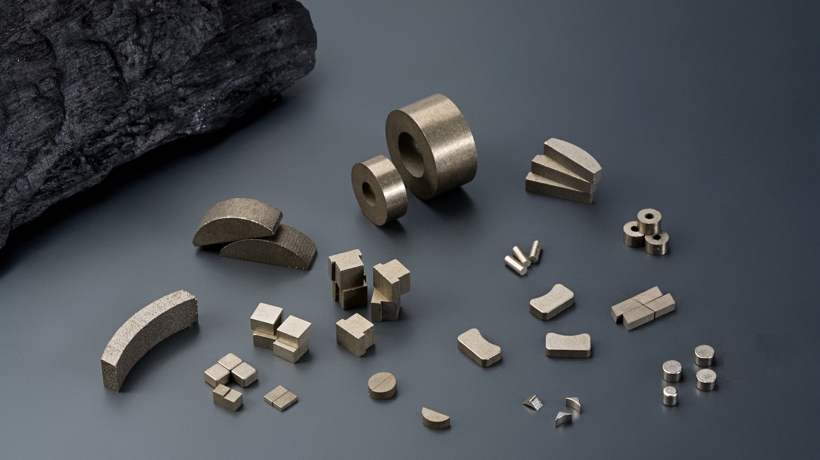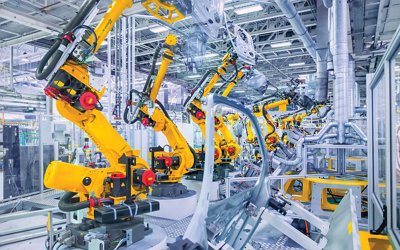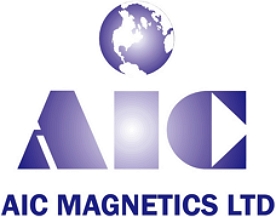Introduction
If you’ve ever wondered what keeps high-tech motors humming or cutting-edge sensors ticking in extreme conditions, chances are you’ve encountered the unsung hero of the magnet world: the SmCo magnet. Short for Samarium-Cobalt, this rare-earth magnet punches well above its weight, delivering incredible strength and durability where others falter. But what exactly is a SmCo magnet, and why does it matter? Let’s break it down in a clear, practical, and - dare I say - magnetic way.
In this post, we’ll explore what SmCo magnets are, how they’re made, their key properties, and where they shine in real-world applications. Whether you’re an engineer, a hobbyist, or just curious about the tech powering your gadgets, you’ll walk away with a solid grasp of this remarkable material.

The Basics: What’s a SmCo Magnet Made Of?
A SmCo magnet is a permanent magnet crafted from a blend of two key elements: samarium (Sm) and cobalt (Co). These elements come from the rare-earth family, a group of metals known for their unique magnetic and chemical properties. The combination isn’t random - samarium and cobalt team up to create an exceptionally strong material resistant to the forces that degrade weaker magnets.
Manufacturers typically produce SmCo magnets in two main compositions:
- SmCo5: A 1:5 ratio of samarium to cobalt, offering a balance of strength and cost.
- Sm2Co17: A 2:17 ratio that further boosts magnetic power and temperature stability.
The production process starts with mining these raw materials, followed by high-tech steps: alloying, milling, pressing, sintering (heating without melting), and magnetizing. The result? A compact, shiny block or disc that can hold its magnetic field for decades.
Think of it like baking a cake - only instead of flour and sugar, you’re blending rare-earth metals under intense heat and pressure. The end product is tough, reliable, and ready to tackle demanding jobs.
Why SmCo Magnets Stand Out: Key Properties
So, what makes SmCo magnets special? It’s all about their standout characteristics. Let’s unpack the big three:
1. High Magnetic Strength
SmCo magnets deliver a magnetic field that rivals their more famous cousin, the neodymium (NdFeB) magnet. Measured in terms of magnetic energy product (BHmax), SmCo magnets range from 16 to 32 MGOe (Mega Gauss Oersteds). That’s geek-speak for “really, really strong.” For context, a typical fridge magnet clocks in at under 1 MGOe. SmCo magnets lift, pull, and hold with serious gusto.
2. Temperature Resilience
Unlike many magnets that lose their mojo in the heat, SmCo magnets thrive in extreme temperatures. They maintain their magnetism up to 300°C (572°F) for SmCo5 and 550°C (1,022°F) for Sm2Co17. Neodymium magnets, by comparison, start to fade above 80°C (176°F) unless specially treated. This heat tolerance makes SmCo a go-to for aerospace and industrial applications where things get toasty.
3. Corrosion Resistance
Rust is the enemy of many metals, but SmCo magnets shrug it off. Their natural resistance to oxidation means they don’t need protective coatings in most cases, unlike neodymium magnets, which corrode without a nickel or epoxy shield. This durability simplifies design and extends lifespan in harsh environments.
Add to that a high coercivity - meaning they resist demagnetization - and you’ve got a magnet built to last. But like any tech, SmCo magnets have trade-offs. They’re brittle, pricey, and trickier to machine than alternatives. Still, their strengths often outweigh these quirks.
How SmCo Magnets Are Made: A Peek Behind the Curtain
Creating a SmCo magnet isn’t a backyard project - it’s a precision process. Here’s how it happens:
1. Raw Material Prep
Samarium and cobalt are mined, refined, and alloyed into a powder. Purity matters here; impurities can weaken the final magnet.
2. Pressing and Shaping
The powder gets pressed into a mold under intense pressure, often in a magnetic field, to align the particles for maximum strength. Think of it as packing snow into a snowball - only with a hydraulic press.
3. Sintering
The pressed shape is heated in a furnace just below its melting point. This fuses the particles into a solid, dense block without losing the magnetic alignment.
4. Finishing Touches
The block is cooled, cut, ground, and magnetized using a powerful electromagnetic field. The result is a sleek, ready-to-use magnet.
This process demands expertise and specialized equipment, so SmCo magnets carry a higher price tag than ceramic magnets. But for the performance you get, it’s often worth it.

Where SmCo Magnets Shine: Real-World Examples
SmCo magnets aren’t just lab curiosities—they power critical systems across industries. Here are a few places you’ll find them in action:
- Aerospace and Defense
Picture a satellite orbiting Earth, exposed to wild temperature swings and radiation. SmCo magnets keep their motors and sensors running smoothly. NASA has relied on them for missions where failure isn’t an option. Their stability at -200°C to +300°C makes them ideal for space.
- Medical Devices
Have you ever had an MRI? SmCo magnets have been used in early MRI machines and other precision medical tools. Their reliability ensures consistent performance, even in compact, heat-generating devices like pacemakers or surgical robots.
- High-Performance Motors
Electric vehicles (EVs) and industrial machinery often use SmCo magnets for rotors. A case study from a German automaker showed SmCo-powered motors outperforming alternatives in high-heat tests, extending motor life by 20% in extreme conditions.
- Energy Sector
Wind turbines in scorching deserts or frigid offshore sites use SmCo magnets to convert wind into electricity. Their corrosion resistance and thermal stability mean less maintenance and more uptime.
These examples show why engineers love SmCo magnets: they solve problems where other materials fail.




SmCo vs. Neodymium: The Showdown
You can’t talk about SmCo magnets without comparing them to neodymium magnets, the other rare-earth superstar. Here’s a quick rundown:
SmCo vs. NdFeB (Neodymium) Magnets
|
SmCo Magnets |
NdFeB Magnets |
|
| Magnetic Strength |
High (16-32 MGOe) |
Very High (28-52 MGOe) |
| Temperature Stability |
Excellent (up to 350°C) |
Moderate (up to 200°C) |
| Corrosion Resistance |
High (no coating needed) |
Low (coating required) |
| Mechanical Strength |
Brittle |
Less brittle |
| Cost |
Expensive |
More affordable |
Choosing between them depends on the job. Need raw power on a budget? Go neodymium. Facing extreme heat or moisture? SmCo’s your pick.
The Downsides: What to Watch For
SmCo magnets aren’t perfect. Their brittleness means they can crack under impact - drop one, and you might be sweeping up shards. Machining them into custom shapes is a headache, requiring diamond tools and patience. And yes, they’re expensive - samarium isn’t exactly lying around in bulk. For budget-conscious projects, alternatives like ferrite magnets might make more sense.
Why SmCo Magnets Matter Today
In a world obsessed with miniaturization and efficiency, SmCo magnets hold a unique niche. They’re not the cheapest or the strongest, but they excel where reliability trumps all. As industries push into harsher environments - think deep-sea exploration or Mars rovers - SmCo’s durability keeps it relevant. Plus, with sustainability in focus, their long lifespan reduces waste compared to magnets that need frequent replacing.
Wrapping Up: The Magnetic Takeaway
SmCo magnets are a testament to human ingenuity, blending rare-earth elements into a powerhouse of strength and resilience. They offer a compelling mix of performance and practicality from their composition to their real-world impact. Whether they’re spinning a turbine or guiding a spacecraft, these magnets prove that sometimes the smallest components make the biggest difference.
Ready to dive deeper? Please explore our site for more on magnetic materials and their applications. Check out our guide on [Neodymium Iron Boron (NdFeB) Magnets: A Technical Overview] . Have questions or a project in mind? Drop us a line - we’d love to help you find the perfect magnet for the job.
Post time: Mar-17-2025
